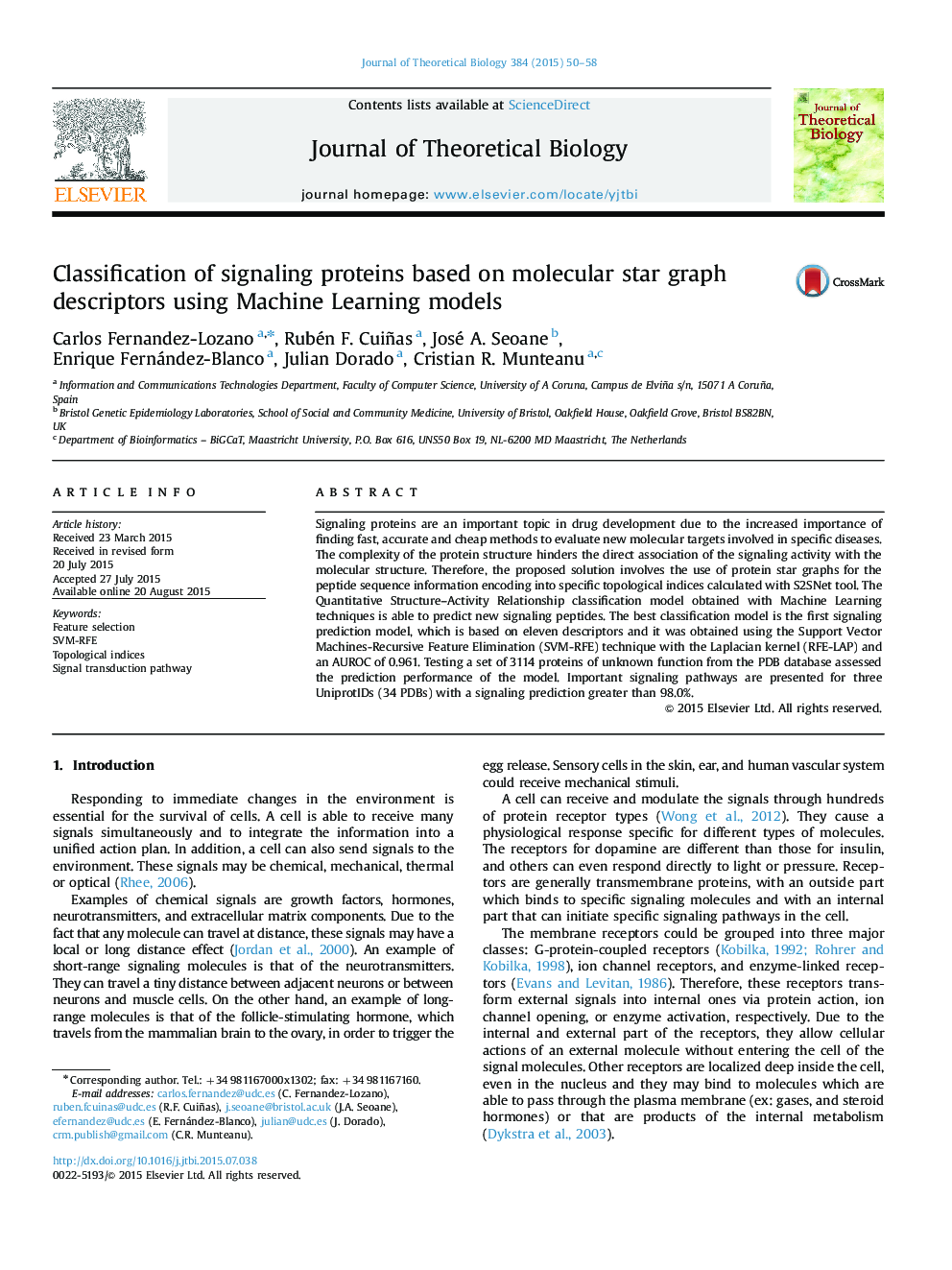| Article ID | Journal | Published Year | Pages | File Type |
|---|---|---|---|---|
| 4495978 | Journal of Theoretical Biology | 2015 | 9 Pages |
Signaling proteins are an important topic in drug development due to the increased importance of finding fast, accurate and cheap methods to evaluate new molecular targets involved in specific diseases. The complexity of the protein structure hinders the direct association of the signaling activity with the molecular structure. Therefore, the proposed solution involves the use of protein star graphs for the peptide sequence information encoding into specific topological indices calculated with S2SNet tool. The Quantitative Structure–Activity Relationship classification model obtained with Machine Learning techniques is able to predict new signaling peptides. The best classification model is the first signaling prediction model, which is based on eleven descriptors and it was obtained using the Support Vector Machines-Recursive Feature Elimination (SVM-RFE) technique with the Laplacian kernel (RFE-LAP) and an AUROC of 0.961. Testing a set of 3114 proteins of unknown function from the PDB database assessed the prediction performance of the model. Important signaling pathways are presented for three UniprotIDs (34 PDBs) with a signaling prediction greater than 98.0%.
